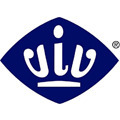 After an initial, quick evaluation of FIGAP / VIV Mexico, VIV plans to tighten its associations with the primary production sectors poultry, pigs and dairy in that country. The second edition of the exhibition, which featured a number of well-attended peripheral programmes, saw an increase in the appreciation ratings from both exhibitors and visitors.
After an initial, quick evaluation of FIGAP / VIV Mexico, VIV plans to tighten its associations with the primary production sectors poultry, pigs and dairy in that country. The second edition of the exhibition, which featured a number of well-attended peripheral programmes, saw an increase in the appreciation ratings from both exhibitors and visitors.
Guus van Ham, responsible for organising the exhibition in Mexico, is happy with the increased appreciation, but wants to integrate VIV in this interesting growth market on an even broader and deeper level. "We have made significant progress. The quality of the visitors - in the sense of authority and decision-making capacity - improved. Of the attendees, 61.1% had decision-making authority and 26.8% of the visitors were involved in investment decisions in an advisory capacity. The visitor survey also shows that 82.3% of visitors are planning to attend the next exhibition", Van Ham explains, "but we feel there is more potential. In the new year we will assess how we can establish closer links to the livestock sector and food production chains, because it is clear there are things we can offer each other."

Now that these first conclusions have been drawn, two months after the event, the VIV organisation plans to look at Mexico mainly as a strong, local growth market. Mexico might not be a stepping stone to other growth markets on the South American continent but, with more than 100 million inhabitants, the country offers tremendous opportunities for the animal husbandry sector. Mexico is already the world’s fourth-largest producer of animal feed. The country occupies fifth place in the global egg production ratings. The Mexicans import huge quantities for their meat consumption, which is why the approximately 100 international exhibitors (a total of approximately 200 exhibitors) find this large, local market for poultry, pigs and dairy farming interesting.
"It goes without saying that we have serious plans to invest more in this country. Our format - not just the exhibition, but an interactive platform for knowledge exchange - has obvious potential. By working more closely with the large local producer associations we hope to offer the industry better access and more perspective in Mexico. This will ultimately reinforce VIV's right to exist; after all, we represent and are part of the industry", says Guus van Ham.
Van Ham refers to the 2012 exhibition as 'a great improvement' over the first event organised in 2010.
"A very strong exhibition. We are very well positioned in the animal feed area and we are also on the right track in animal housing. However, we want to create more support in the rest of the chain; not only with respect to the physical exhibition floor area, but also via the peripheral programmes," says the exhibition organiser. A number of different congresses and seminars were linked to FIGAP / VIV Mexico, such as the feed production school, with participant training and certification. An international framework congress on avian influenza was also organised, in which local and international veterinary experts shared knowledge with a packed audience.
Finally there was a meeting of Conafab (Consejo Nacional de Fabricantes de Alimentos Balanceados y de la Nutrición Animal), organised for producers of animal feed, that was highly successful, and some 'big names' appeared at the round table on food safety organised by WATT Publishing.
December 21, 2012 - VNU


